Some may argue that life is an archive of conflicts that shape our being and identity. More obvious conflicts are perhaps ones that are external, comprehensible and sometimes even physical. A fight with a loved one, a difference in ideology with a news channel, a job that doesn’t settle well with your ambition.
However, conflicts that are internal and with oneself often fly under the radar; undetected, unaddressed. Should I apologise or stand my ground? Am I willing to compromise with my values? What does success mean to me? These inner issues are a pressing part of the human condition that induce anxiety, depression and chronic dissatisfaction. It would be safe to say that we are all troubled by our emotions in one way or another.
My critical design exhibition/narrative, You’re in my Head (2016) serves to investigate the purpose of self-reflection in creating grounds for emotional well-being.
The project is a series of mixed media artefacts that explores and visualises some of our most prevalent (individual and collective) emotional turmoils and behaviours.
I approach the problem with the help of philosophy, cognitive psychology, surrealism and humor.
“These inner issues are a pressing part of the human condition that induce anxiety, depression and chronic dissatisfaction.”
I propose a radical re-imagination of our relationship with ourselves. A relationship of awareness, kindness and healthy self critique.
The exhibition begins in a dark and cold space that creates a claustrophobic and winding atmosphere, mimicking a journey into the deepest crevices of our mind; where we meet The Monkeys.
1. The Monkeys
Based on Sigmund Freud’s psychological literature (the id, ego and superego) the exhibition follows three monkeys, who are a visual embodiment of our inner conflicts or demons. They are strong individual identities who are constantly at loggerheads. One functions as our id: Inner child. The second functions as our ego: Reality check. And the third works as our superego: Moral authority. By rendering these psychological theories with visual flesh and bones, I intend to transport them from an intellectual plane to a physical reality.
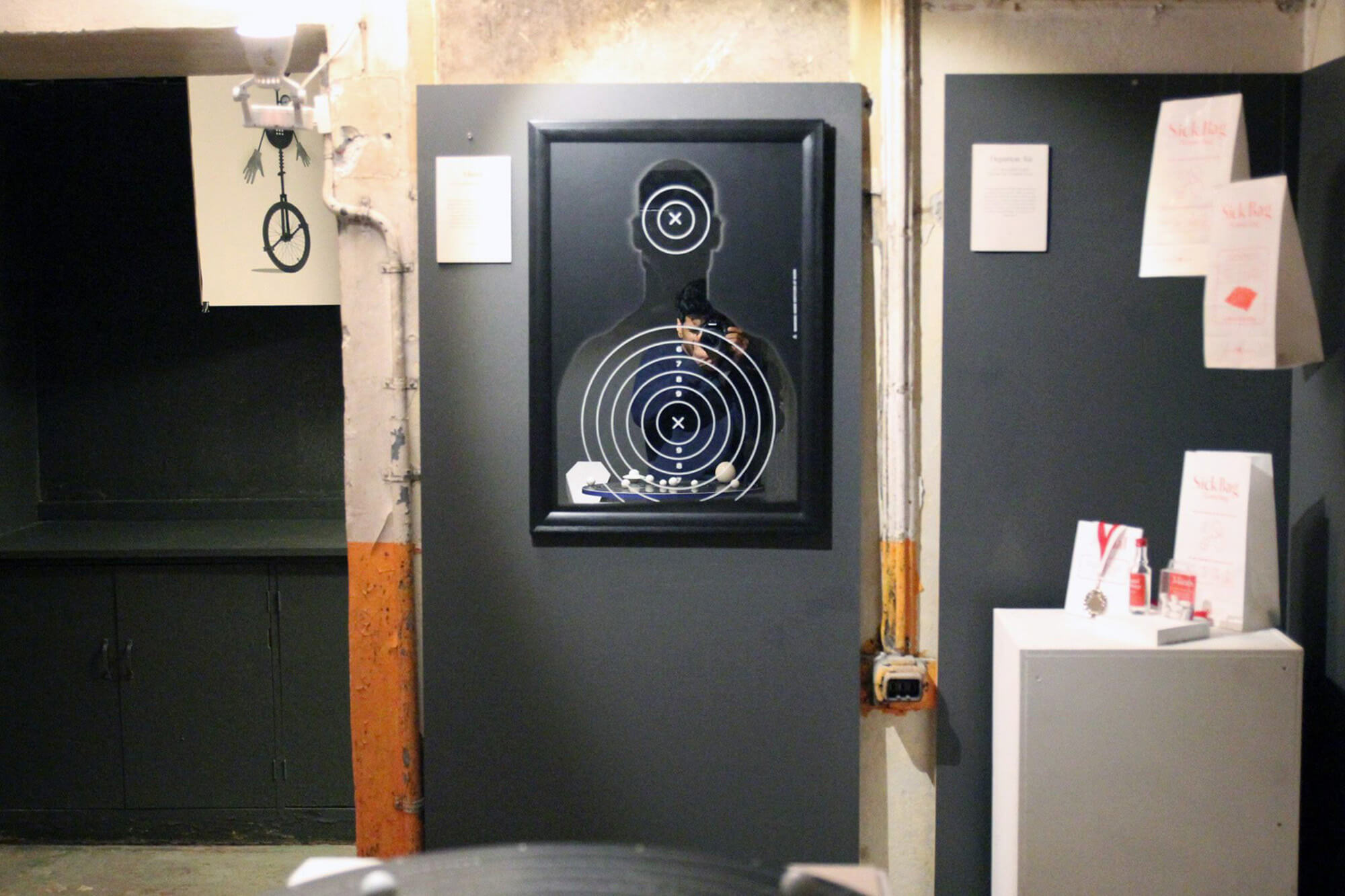
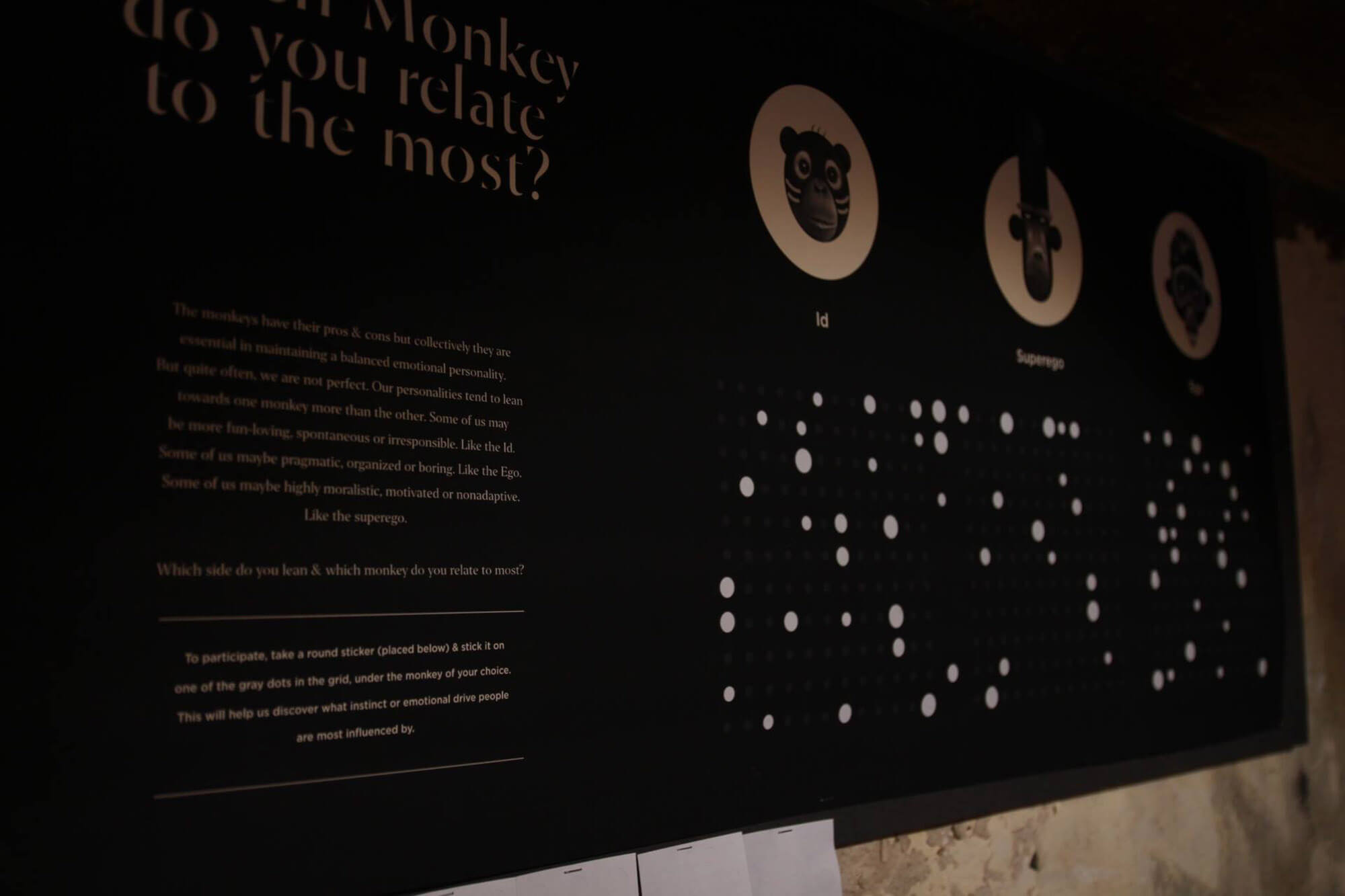
2. Their objects
If you open a person’s bag and find the contents inside, what can you tell about their user and their persona? The monkeys possess a total of nine objects. They use these objects to exercise their will and influence our decisions. The objects, even though usual in appearance, have a deeper conceptual and satirical purpose. By holding and interacting with them, the audience learns a thing or two about their
own cognitive biases.
2.1 Object 1: Scales of judgement

The tool enables the user to accurately gauge the skin tone of the subject of judgment to practice subtle racism. The scale also helps you classify certain skin tones as 'dangerous'or 'high alert' and certain skin tones as 'safe'.
2.2 Object 2: Consume/consumed: The Coffin
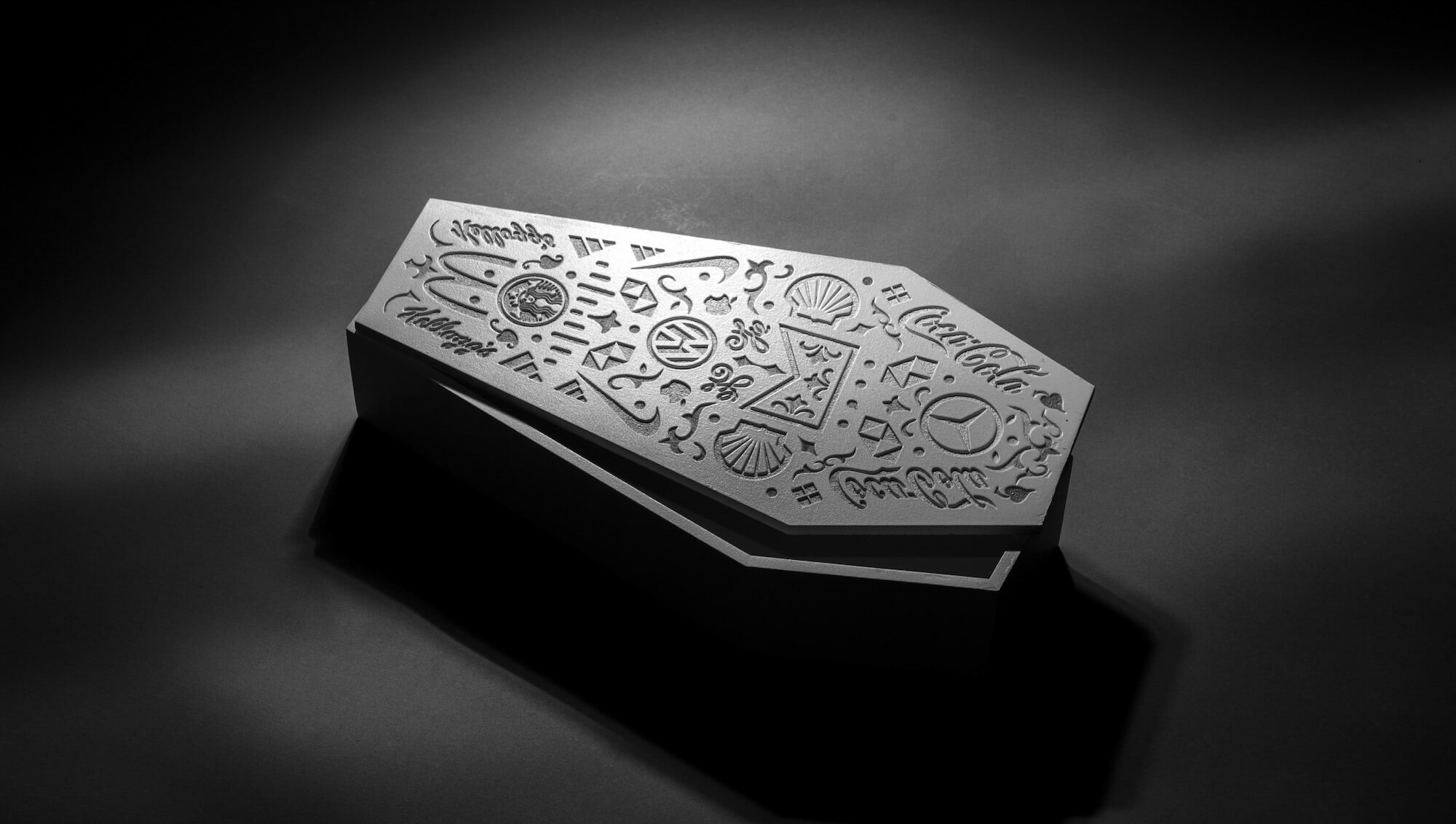
The object is a scale model of a coffin that works as a reminder of the process of identity creation. How we hand-craft and curate our identity with the help of brands. We all look for the perfect clothes that define us, or the car that matches our ambition or the vegan restaurant that helps us become a part of a sub-culture. We are all creators of our persona which is a big part of our digital lives as well. The coffin connects our process of identity creation to our consumerist nature.
2.3 Object 3: Holier than thou: A podium
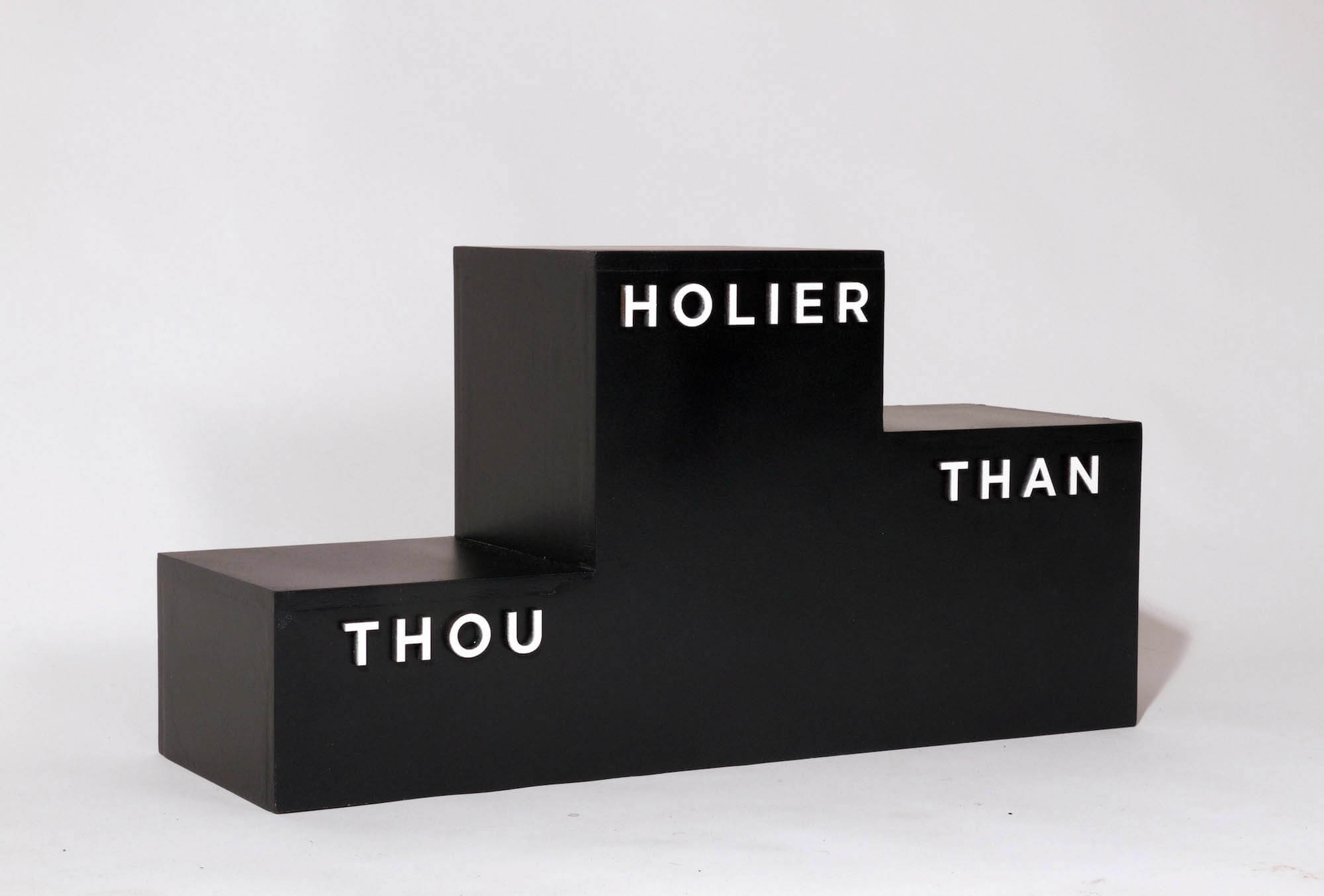
This piece is a satirical comment on narcissism and a sense of superiority in our beliefs/ideologies. Eventually, the feeling of superiority starts dictating how we treat others or people who might be in disagreement with our ideas. In a more extreme scenario, religious extremism is an example in similar vein. Where people are willing to kill one another to prove the superiority of one´s belief system.
Subconsciously, these objects attempt to initiate a dialogue about often neglected or even unspeakable topics pertaining to our 21st century human condition.The tonality and satire eases the audience into soft catharsis and self reflection.
3. The Conversation: Film (video)
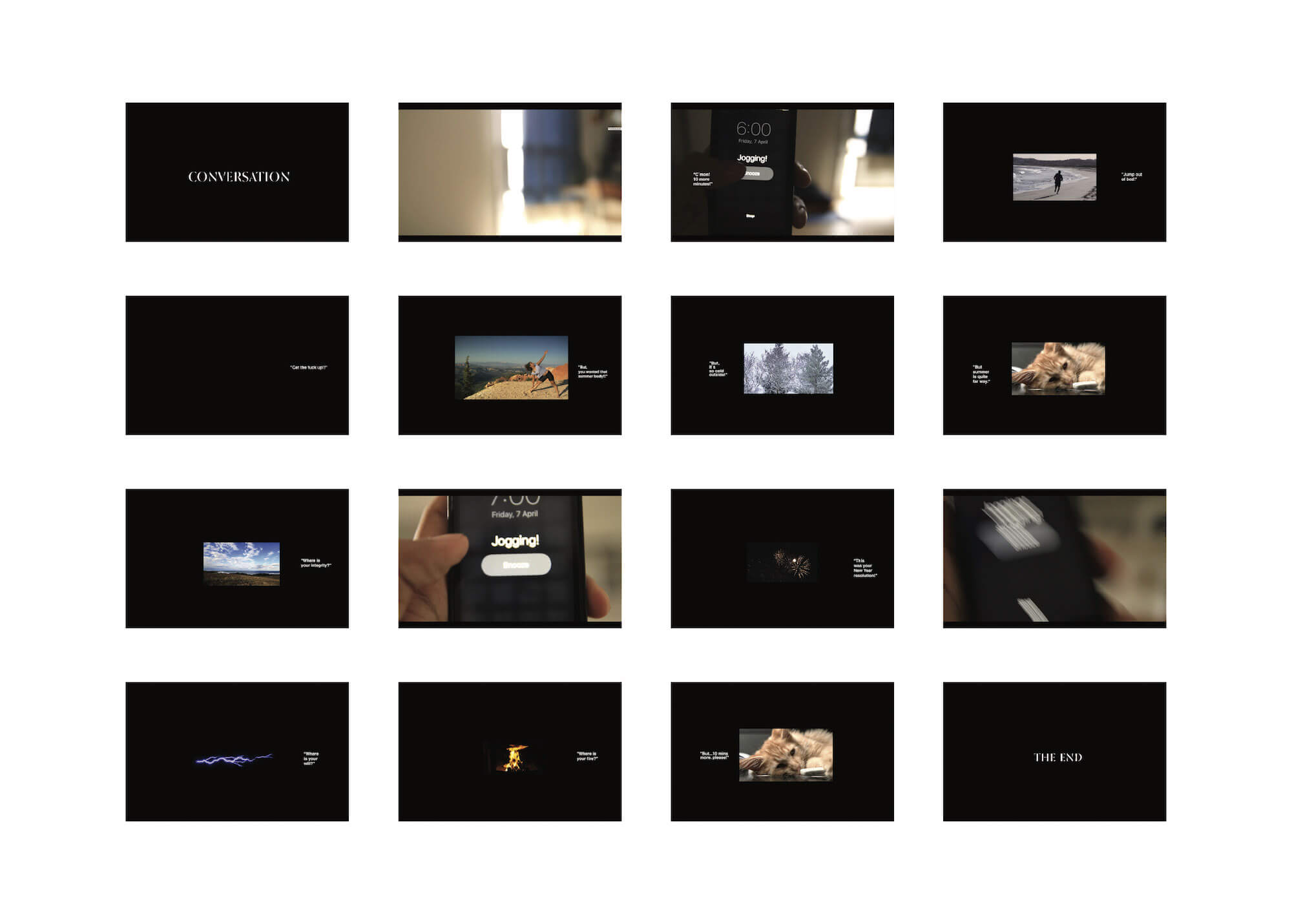
The film functions as a vessel for the audience to assume the role of the ego in daily inner conflicts and listen to the arguments that take place between the id and the superego.While viewing the film, the audience is required to wear headphones. The left side of the headphones plays the voice of the id and the right side plays the voice of the ego. Their conversation often becomes an argument and the film becomes a literal representation of the noise in our head.
4. Pills

The Pills work to ease the audience’s transition from the exhibition to the real world. A pack of three pills is given to every audience member as they exit the exhibition space. The Pills also serve as as digital memories of the Exhibition.The pills are gelatin capsules that are not meant to be eaten but opened. Upon opening the pills, the user finds a rolled piece of paper with a QR code on it. By scanning the QR code the user will be directed to three digital publications that serve as a reminder of this exhibition and takes its core message of this winding journey beyond four walls.